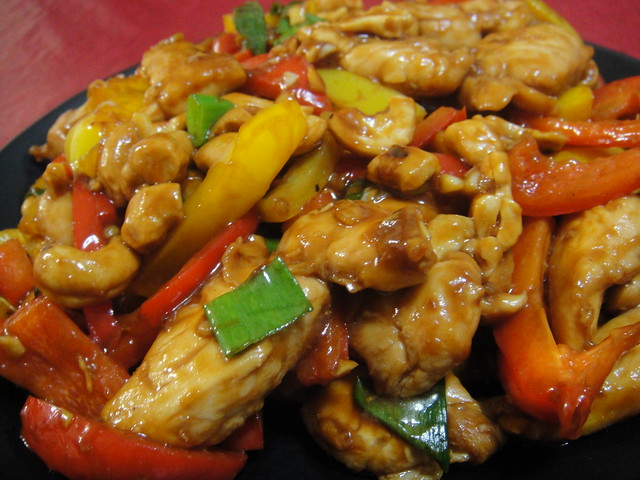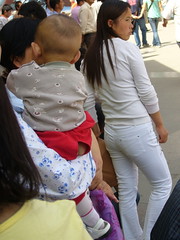People ask me all the time what kind
of food I cook for Lawrance. They want to know if we eat Taiwanese food
or American food. My answer is not simple: To Taiwanese, we eat what
looks like western food, but to Americans we eat what looks like
Asian cuisine. It is our own unique fusion of east meets west.
I’m slowly learning the art of
stir-fry. I’m learning tricks to the trade and figuring out how to make
things we both love. And, I’m always on the lookout for
new recipes to try to see how we’d like them.
Last week, I made this:
And it was a homerun! Simple and
delicious! Yay for another dish to be part of our regular rotation.
I call it YaoGua JiDing with Peppers
(aka Cashew Chicken with Peppers). It’s not quite really “cashew
chicken,” but it does have cashews and chicken in it.
Ingredients
·
5 tsp cornstarch
·
3 Tbs soy sauce
·
4 tsp apple cider vinegar
·
2 tsp rice wine vinegar
·
1.5 tsp sugar
·
1 tsp hot pepper sauce (such as Tabasco)
·
1 pound chicken breast tenders
·
1 yellow bell pepper
·
1 red bell pepper
·
2-4 cloves garlic
·
1 tsp fresh ginger
·
1 stalk of green onions
·
1/2 cup unsalted cashews
·
2 Tbs coconut oil (I use coconut, you can use oil of your
choice)
Directions
1. Combine 2 tsp cornstarch, 2 Tbs soy
sauce, and next 4 ingredients (through hot pepper sauce) in a small bowl; stir
with a whisk or chopsticks.
2. Slice the two bell peppers, mince the
garlic and ginger, and cut the green onions.
3. Cut chicken into bite-sized pieces.
Combine 3 tsp cornstarch, 1 Tbs soy sauce, and chicken in a medium bowl; toss
well to coat.
4. Heat wok over medium heat.
5. Add cashews to pan to lightly toast,
stir frequently. Remove from pan.
6. Add oil to pan. Add chicken; stir-fry
but don’t cook all the way (about 85% done). Remove almost cooked chicken from
pan; place in a bowl.
7. Add bell pepper to pan and stir-fry
about 2 minutes. Add garlic and ginger; cook 30 seconds.
8. Add the almost cooked chicken and the
sauce (made in #1); cook until sauce is slightly thick (about 1 minute).
9. Sprinkle with the toasted cashews and
green onions. Turn mixture over a few times then serve.
One of the keys to stir-frying is to
prep EVERYTHING before you get started. Once you start, there is no
turning back because it all happens so quickly once you get started. That is
why I now include the prep in my recipes (#2 & 3) above.
This took me a little less than 30
minutes from start to finish my first time making it. It made about four
servings.




